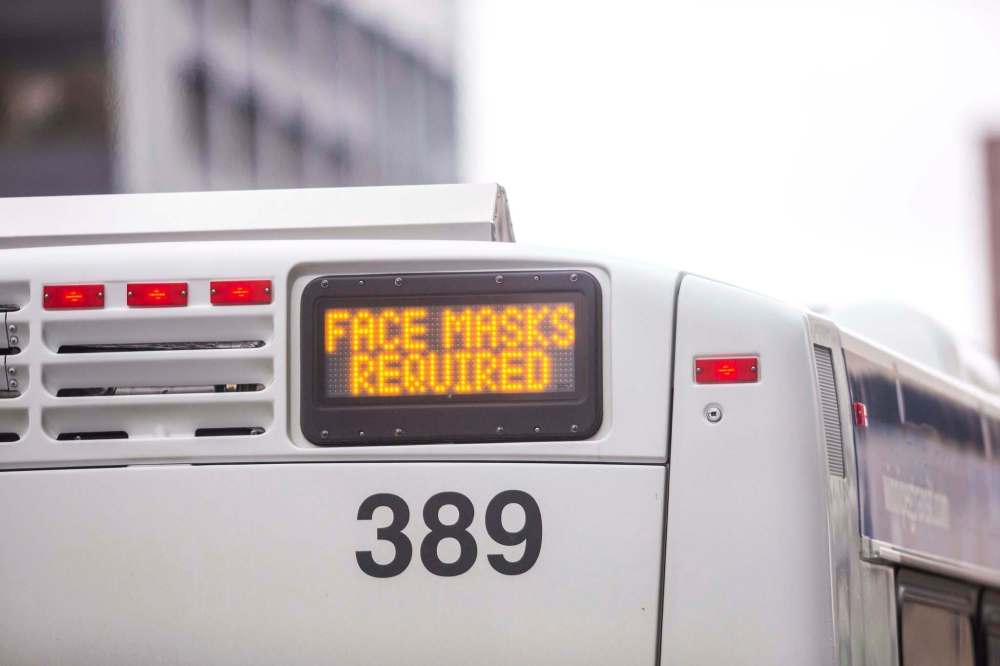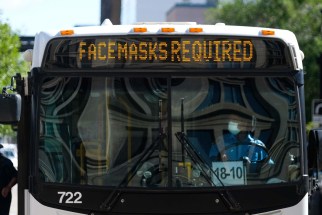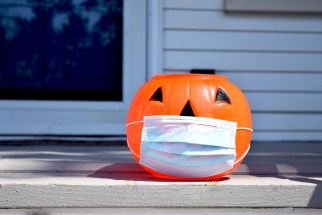As Winnipeg pandemic concerns rise, Transit rolls on
Read this article for free:
or
Already have an account? Log in here »
To continue reading, please subscribe:
Monthly Digital Subscription
$0 for the first 4 weeks*
- Enjoy unlimited reading on winnipegfreepress.com
- Read the E-Edition, our digital replica newspaper
- Access News Break, our award-winning app
- Play interactive puzzles
*No charge for 4 weeks then price increases to the regular rate of $19.00 plus GST every four weeks. Offer available to new and qualified returning subscribers only. Cancel any time.
Monthly Digital Subscription
$4.75/week*
- Enjoy unlimited reading on winnipegfreepress.com
- Read the E-Edition, our digital replica newspaper
- Access News Break, our award-winning app
- Play interactive puzzles
*Billed as $19 plus GST every four weeks. Cancel any time.
To continue reading, please subscribe:
Add Free Press access to your Brandon Sun subscription for only an additional
$1 for the first 4 weeks*
*Your next subscription payment will increase by $1.00 and you will be charged $16.99 plus GST for four weeks. After four weeks, your payment will increase to $23.99 plus GST every four weeks.
Read unlimited articles for free today:
or
Already have an account? Log in here »
Hey there, time traveller!
This article was published 29/10/2020 (1866 days ago), so information in it may no longer be current.
More than one-third of Manitoba’s reported public COVID-19 exposures in the last month have involved public transit routes, and two Winnipeg Transit drivers have thus far tested positive for the novel coronavirus.
While those numbers would give most any potential rider pause, despite all such encounters being deemed “low risk,” the buses roll on — amid mandatory face mask usage, disputed vehicle cleaning schedules, and the fact people simply need to get places.
Of the roughly 30 possible exposures listed since late September on the province’s website, 12 are linked to one or more Transit routes (including the No. 15, twice each day Oct. 20 and 21, the city said Thursday).
Whether they have translated to any confirmed transmissions is not known.
“In all the cases so far that I know of, public health actually has indicated that they are low risk because in most cases the person who was symptomatic boarded a bus (and) was wearing a mask or was wearing a mask and was there only for a few minutes.” – Romeo Ignacio, president of Amalgamated Transit Union Local 1505
In an email Tuesday, a provincial spokesperson said the province does not have “readily available” data on COVID-19 cases contracted on Transit routes.
Determining whether someone caught COVID-19 on a bus would be challenging for contact tracers, the spokesperson said, because individuals would not know each other well enough to have contact tracing to follow up on.
However, if public health officials notice two or more cases used the same public transit during their acquisition or transmission period, officials would take a closer look at it as the transmission venue.
In downtown Winnipeg, the epicentre of one of Canada’s COVID-19 hotspots, many of the city’s usually crowded routes were sparsely populated Wednesday morning.
Would-be riders waited, face masks on, in the snow at stops along Sherbrook Street and Portage Avenue, while the typically buzzing Polo Park No. 11 buses drove by carrying only a handful of passengers, and extra-long blue lines pulled away empty.

Outside the One Canada Centre at Portage and Colony Street, one of the city’s largest bus shelters was quiet, as a smaller contingent of mid-morning weekday traffic awaited rides to school or work. Some express routes, such as the Portage Express No. 21 are near-full. The vast majority of passengers are masked, though one or two stand out, faces exposed in the crowded bus.
Winnipeg Transit has logged 97 per cent compliance with mask use among its passengers, a municipal representative said in an email Wednesday. Compliance is tracked through observations carried out by “on-street supervisors stationed at strategic locations, and other personnel.”
No $100 fines — the penalty for mask non-compliance on Transit — have been handed out thus far, the city added. Instead, Transit inspectors are to hand out single-use masks in an effort to assist with pandemic restriction education.
Romeo Ignacio, president of Amalgamated Transit Union Local 1505, said in an interview Wednesday he is “not sure” whether anyone has contracted the virus on a Transit bus, though the high number of possible exposures presents cause for concern.
“In all the cases so far that I know of, public health actually has indicated that they are low risk because in most cases the person who was symptomatic boarded a bus (and) was wearing a mask or was wearing a mask and was there only for a few minutes,” Ignacio said.
“When we look at kind of mass transport, whether it is buses, whether it is airplanes, we haven’t seen those massive super-spreading events.” – Virologist Jason Kindrachuk
While mask compliance has been generally high, Ignacio said, the union that represents Transit drivers and mechanics would like to have it reach 100 per cent. The union is not asking for fines to be doled out, he said, but more to be done in education and mask availability.
“Most of the people actually understand and are responsible, but there’s a small group of people that due to their circumstances are not able to buy a mask, but they still need to use the public transit system. So that’s where most of our issues are coming from,” he said
“We advise our members not to deal with the people that are disobeying the mandate, but at the same time, Transit is not doing anything with regards to enforcement.”
In addition to the mask rule, in place since Aug. 29, buses are also disinfected every 48 hours, both Ignacio and the city confirmed — with the union asking for a tighter schedule. Of Transit’s 600-plus bus fleet, only about half are cleaned each day, Ignacio said, leaving some 300 in service without having been disinfected.
Winnipeg virologist Jason Kindrachuk said the cleaning schedule does not present a major concern for potential community spread.
“We’re not going to catch the virus just by touching our skin up against a surface,” he said in an interview Thursday. “The transmission that we see is still directly through basically the eyes, the mouth, the nose.”
Transit use has been deemed relatively safe, Kindrachuk said, so long as passengers do their best to adhere to mask use, proper hygiene, physical distancing when possible, and staying home if they have symptoms.
“When we look at kind of mass transport, whether it is buses, whether it is airplanes, we haven’t seen those massive super-spreading events,” he said.
Still, as Winnipeg’s positive test rate notches above eight per cent, “It suddenly becomes a little more difficult to say, ‘Yeah, it’s absolutely safe.’”

Transit ridership, which bottomed out in the spring, has trickled up again, according to data provided by the City of Winnipeg. Still, most recent weeks indicate ridership is more than 50 per cent of the same period last year.
“We still have those regular riders, and the people who don’t have any choice: they don’t have any cars, they don’t have any other means of transportation,” Ignacio said.
“At the end of the day, the public transit system is for the public, and we want to make sure that we’re delivering a safe service.”
julia-simone.rutgers@freepress.mb.ca
Twitter: @jsrutgers

Julia-Simone Rutgers is a climate reporter with a focus on environmental issues in Manitoba. Her position is part of a three-year partnership between the Winnipeg Free Press and The Narwhal, funded by the Winnipeg Foundation.
Our newsroom depends on a growing audience of readers to power our journalism. If you are not a paid reader, please consider becoming a subscriber.
Our newsroom depends on its audience of readers to power our journalism. Thank you for your support.







